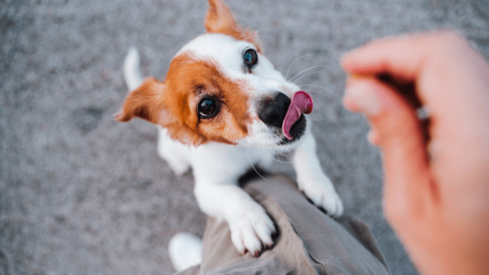An update on the US pet treats market

After sales of pet treats sored during the pandemic, the market now seems to be leveling. But dog and cat treats remain popular among pet parents.
Sales of pet treats and chews benefitted from a pandemic surge, rising 20% in 2020, 18% in 2021, and 12% in 2022, to reach $11.3 billion (€10.5B) in that year. Even with sales growth rates now tapering off somewhat, pet treat sales are projected to grow at a very robust 10% compound annual growth rate between 2021 and 2026.
Dog treats outperforming cat treats?
Broken down by products for dogs versus cats, dog treats account for the lion’s share of US sales, at 80% in 2022. Even so, cat treats outperformed dog treats in sales growth in 2020 and 2022. What’s more, they have even seen significant increases in usage rates over the last decade.
While MRI-Simmons reports that the usage rate for dog treats is fairly steady at 76-78% between 2012 and 2022, usage rates for cat treats jumped from 51% in 2012, to 61% in 2022.
In terms of sales, in-store accounted for 63% of dog treat sales and 66% of cat treat sales in 2022. This amounted to 37% and 34% respectively, for online sales of traditionally bricks-and-mortar-based retailers.
However, the percentage of e-commerce sales is projected to overtake in-store sales by 2027, with 54% of dog treat sales and 49% of cat treat sales. Autoship programs continue to represent potent sales opportunities for online marketers of pet food and treats, with dry pet food (attracting 22% of dog and cat owners) and pet treats (21%) topping the recurrent subscription programs usage rate.
Growing demand for functional treats
The increased focus on pet health and wellness – the main driver of sales growth across the US pet industry – has resulted in greater interest in functional treats.
In general, pet parents have become more picky about the types of treats they purchase, favoring those with a better nutritional profile. Over four-fifths (83%) of respondents to a 2022 Packaged Facts survey of pet owners liked the idea of healthier snacks/treats for their pets. This study also showed the following preferences:
- dental chews/treats attract 53% of dog owners and 25% of cat owners
- healthier snacks/treats attract 45% of dog owners and 38% of cat owners
- functional pet treats attract 25% of dog owners and 22% of cat owners.
The pet treats category closely follows the major trends in pet food overall. This makes sense given that many of the marketers, brands and formulations at play are the same. The most sought-after types of treats include those boasting natural or organic ingredients, functional or limited ingredients, novel protein, and US- sourced ingredients. Dental chews and treats that serve both functional and pet pampering and entertainment needs remain popular. Interestingly, more indulgent treats mimicking the flavor profiles of human foods also remain in strong demand.
As with American shoppers at large, pet owners’ top shopping priorities are product quality, product affordability, and shopping convenience. Over half of the pet owners are concerned about the ethical and humane treatment of the animals raised to use in pet food/treats (57%) and like the idea of using more sustainable alternative protein ingredients in pet food and treats (53%). These figures score even higher among millennial and Gen Z pet parents.

